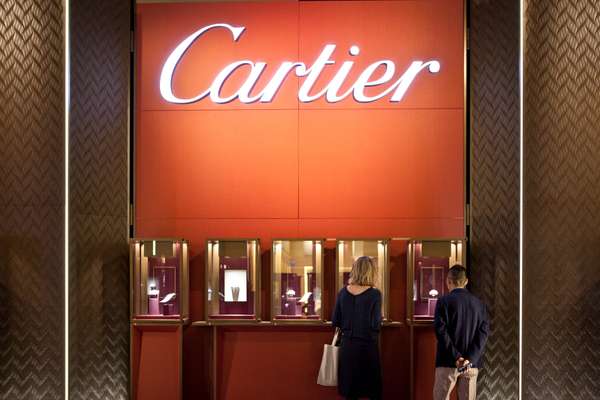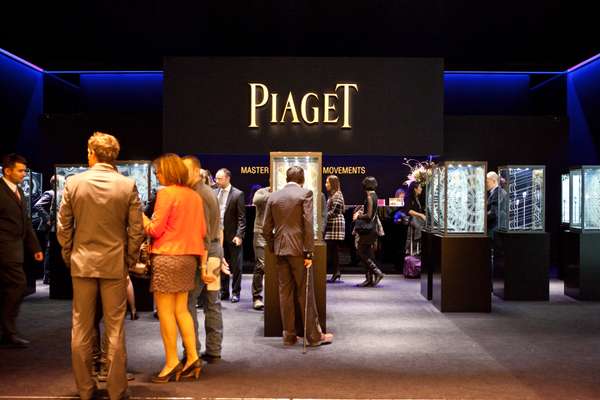Geneva watch fair / Geneva
The best of times
Each year there are two must-attend watch fairs in Switzerland. The vast Baselworld is still some months away but at the smaller, perfectly formed SIHH the talk was of slimming and self-reliance.
Despite the downbeat economic climate hanging over Europe and the snowy conditions hampering the movement of attendees at Switzerland’s premiere showcase for luxury watches, Geneva’s Salon International de la Haute Horlogerie (sihh) gave visitors a warm glow with another solid offering from the country’s high-end manufacturers.
With 2012 exports expected to pass chf20bn (€16bn) for the first time, the Swiss continue to shake off naysayers who expect the upward trend to flatline. Richemont, the Swiss luxury-goods group that owns the majority of the 16 brands at the gathering, was cautiously optimistic even as it reported figures that revealed a slowdown in timepiece purchases in China, a key market thanks to its aspirational appetite for horological finery.
While Asia was on the mind of many (Chinese New Year, a key gift-giving opportunity, falls around the time of the Geneva get-together), few marquees succumbed to the urge to splash serpents on dials to celebrate the current Chinese zodiac. “We are desirable when we look for authenticity,” says Pierre Rainero, Cartier’s image, style and heritage director. “For us, there’s no opportunistic gesture towards a specific market.”








The Parisian jeweller, whose head watchmaker recently earned Geneva’s Grand Prix award for best in class, raised its game with the Calibre de Cartier, powered by its first in-house self-winding chronograph movement and its eye-catching Mystery watch with hands that appeared to float in the air.
The trend for making everything under one roof was noticeable across the board. Recent moves by the Swatch Group, a Richemont rival and a parts supplier that has traditionally sold balance springs and other minute components to power wristwatches, have seen it reduce supplies to outsiders.
Brands unconcerned by that development include Germany’s A Lange & Söhne, which relies on in-house expertise. The only non-Swiss-based player at sihh presented soberly elegant displays on its 1815 Up/Down range, with bridges and plates made of German silver. Based in the horological heartland of the Vallée de Joux, Jaeger-LeCoultre and Audemars Piguet exhibited pieces that revealed their decades-old know-how. The first, celebrating its 180th anniversary, took inspiration from a 1907 pocket watch to produce the Master Ultra Thin Jubilee, at 4.05mm the world’s flattest manually winding wristwatch; the latter juiced up its octagonal Royal Oak Offshore range for the first time with its Grande Complication.
Overall, there was a subtle shift to slimmer models rather than a big investment in r&d. Big-bodied Panerai added more svelte designs. Cases for its Radiomir 1940 and Luminor Marina 1950, the latter presented with a fetching white dial, turned heads alongside the bigger Luminor Regatta in titanium.
The Italian-born brand has no time for negative economic outlooks. It’s set to open a new Swiss manufacturer later this year and has recently cut the ribbons on boutiques from Lisbon to Macau while eyeing still more in its native Italy. Adds Panerai ceo Angelo Bonati: “Crisis or not, we continue to invest.”
Top eight watches
1.
Panerai Luminor Marina 1950
Polished steel, self-winding, alligator strap
2.
Panerai Luminor Regatta
Brushed titanium, self-winding, rubber strap
3.
Calibre de Cartier Chronograph
Stainless steel, self-winding, leather strap
4.
Rotonde de Cartier Mystery
White gold, hand-wound, alligator strap
5.
A Lange & Söhne Grand Lange 1
White gold, hand-wound, hand-stitched crocodile strap
6.
A Lange & Söhne 1815 Up/Down
Yellow gold, hand-wound, hand-stitched crocodile strap
7.
Jaeger-LeCoultre Master Ultra Thin Jubilee
Platinum, hand-wound, alligator strap
8.
Audemars Piguet Royal Oak Offshore Grande Complication
Titanium, ceramic, self-winding, rubber strap
Q&A
Denis Asch
Owner, L’Heure Asch watch retailer
Geneva
What are the trends?
More in-house movements rather than new materials.
What caught your eye?
Piaget, with the thinnest automatic minute repeater with the sound of a loud bell.
Can Asia sustain growth?
Brands must be careful on pricing. There are more wealthy people in Asia so there’s space to sustain growth. I hope most brands are aware that they can’t rely on them for too long: when a boom is too fast, the slowdown can come even quicker.


